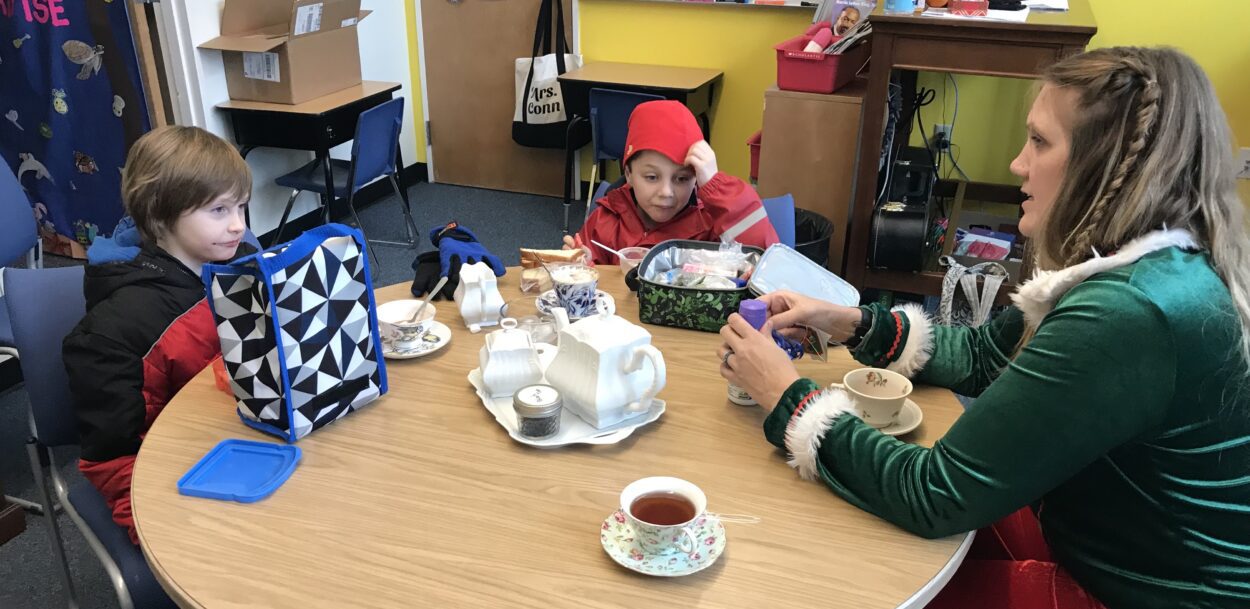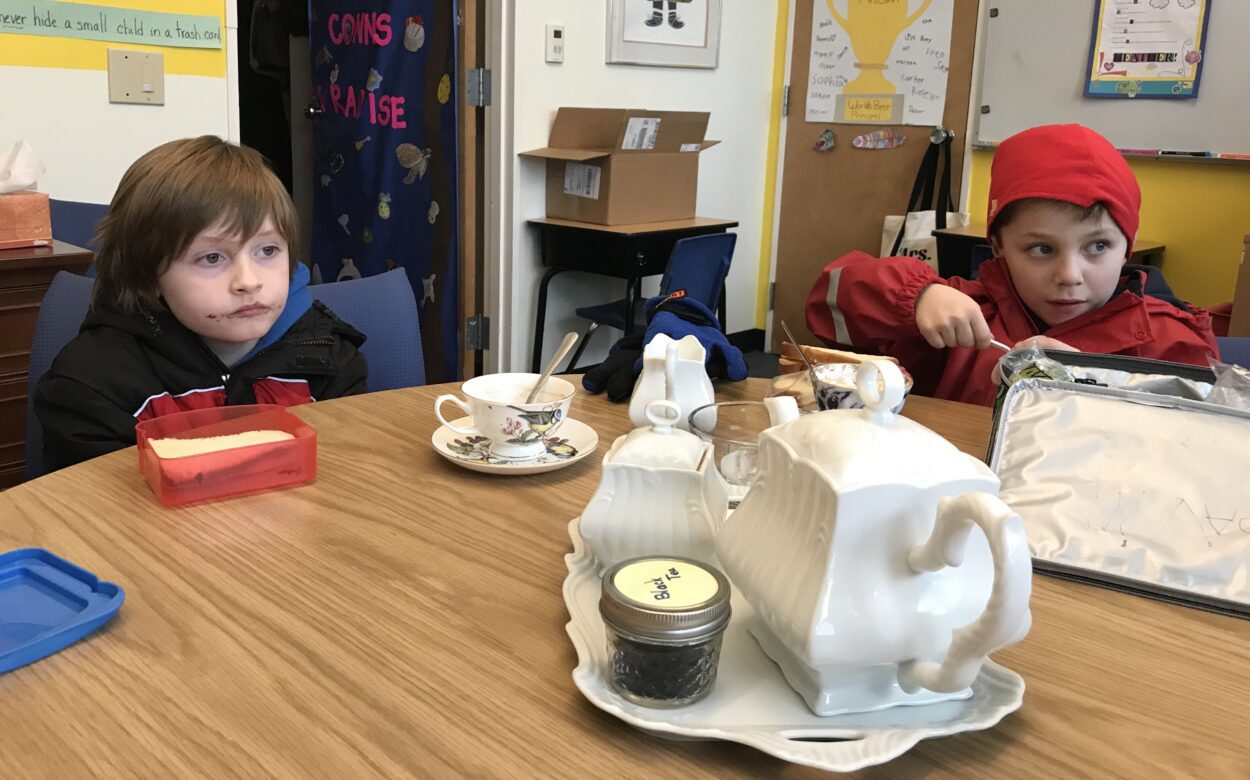
Stedman Elementary School in Petersburg is teaching kids about how to save for long-term rewards in the classroom. Kids can earn stickers or fake money, which they can spend on different prizes. One of the big-ticket popular items is a tea party with their principal, Heather Conn.
Principal Heather Conn is setting up her tea table during lunch time. Her office is decorated with notes and drawings from students. She puts out thin bone-china cups and a teapot. She’s serving hot chocolate today, with heaps of marshmallows, because she says that’s what kids actually want at a tea party.
Two first-grader’s come in—Gavin and Rory—toting lunch boxes. They sit down in the kid-sized chairs. They get hot chocolate, but Conn pours herself an elderberry tea to boost her immune system during flu season.
In first grade, the classrooms use stickers as rewards. Gavin and Rory had to save up for this tea party.
Conn asks them how they get a sticker.
“By being good,” Gavin says.
“Good choices-” says Conn. “What was something that you did?”
“I did directions quickly,” says Rory.
“Oh, you did directions quickly,” Conn says. “That’s one of the golden rules of the classroom.”

Mary Midkiff teaches third grade at the elementary school. She uses laminated paper coins in her classroom.
“I tend to pass it out if they’re following directions,” says Midkiff, “if they’re ready on time, if they take a risk, if they try something new. If they bring their homework.”
Midkiff has heard from families that kids are excited about saving up their pretend money.
“Every time, the parent was like, ‘Oh, I’ve heard all about it. They’ve been talking nonstop. They can’t wait,’ says Midkiff. “And so that’s always really positive you figure when they’re going home excited about it. You’re doing something right.”
But some parents have asked her whether the money system is too much like bribery. But Midkiff says it might be good training for their futures.
“It’s sort of how the adult world works,” Midkiff says. “Like, we do things we enjoy, but we also get a reward for them. We get paid for our jobs, that sort of thing.”
The kids also develop different styles of saving and spending and learn from each other.
“Sometimes you get a child who just wants to save it up all year,” says Midkiff. “And then the last week of school, they’re like, ‘How many things can I go buy this week?’”
Becky Martin is also a third grade teacher at Stedman Elementary. She was the first to come up with the idea.
“What gave me the idea is I watched a little boy counting his stickers one day and I thought, you know, he’s spending a lot of time counting stickers,” says Marin. “I wonder if I can turn this into a more academic endeavor.”
So, she decided to try using fake money as a reward system. With that same student, Martin saw that there was a lot kids could learn about real currency—not just using stickers or points.
“When I first used the coins,” Martin says, “I traded him five pennies for a nickel, and he got quite upset. And I realized he doesn’t have that one-to-one correspondence down. He doesn’t realize that the five pennies do equal the one nickel.”
Kindergarteners and first-graders at the school use stickers. But the older classrooms use play money with real denominations. Kids trade in five pennies for a nickel, two nickels for a dime, and so on. Midkiff turned this task into a job for her classroom.
“A couple of kids, it’s their job to be the bankers,” says Midkiff. “It does rotate… I actually pay them for their classroom jobs. So they get a quarter at the end of the cycle and then they can apply for other classroom jobs.”
Kids save up until they get the ultimate jackpot—a photocopied dollar bill. They can pick from small toy animals to keep at their desk or food-shaped erasers. But Martin says objects aren’t the most sought after rewards.
“Although a few will go into the treasure chest and get an object,” Martin says, “the really popular ones are having tea with Mrs. Conn, helping in the library, having a special privilege.”
Some other special privileges are sitting in a spinny chair during class or bringing your pet to visit the class.
Back in her office, Principal Conn’s starts to wrap up the tea party.
“I only spilled a little bit but it went on the plate,” says Rory.
Conn walks the students back to their classrooms.
In their classrooms, Rory and Gavin can earn more stickers, to save up for their next tea party.











